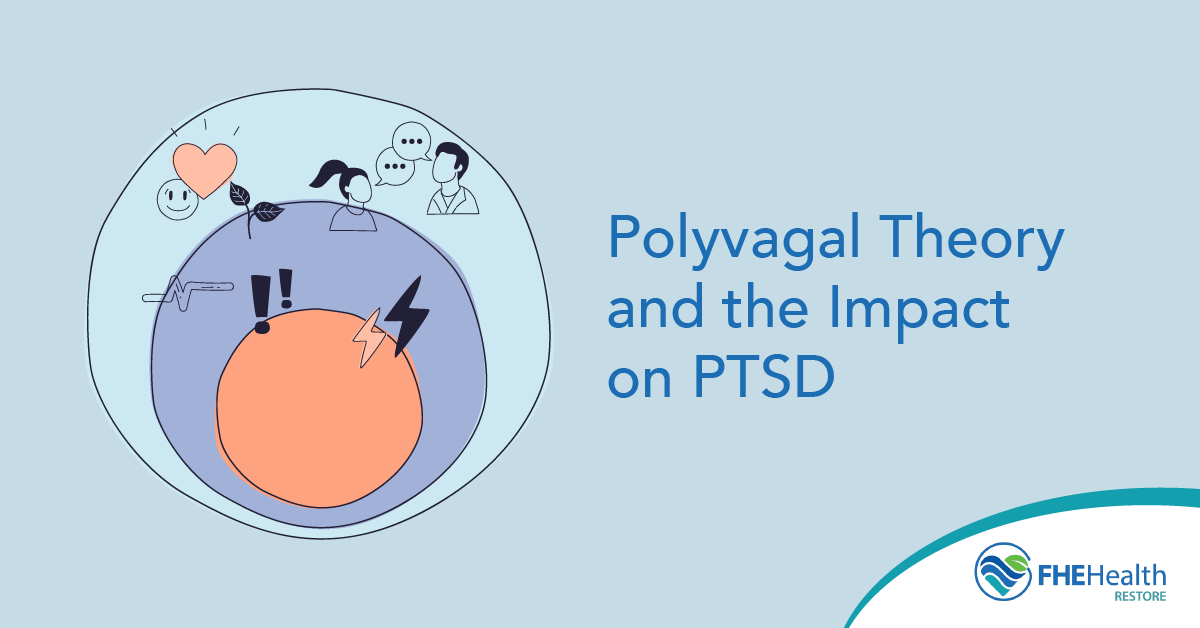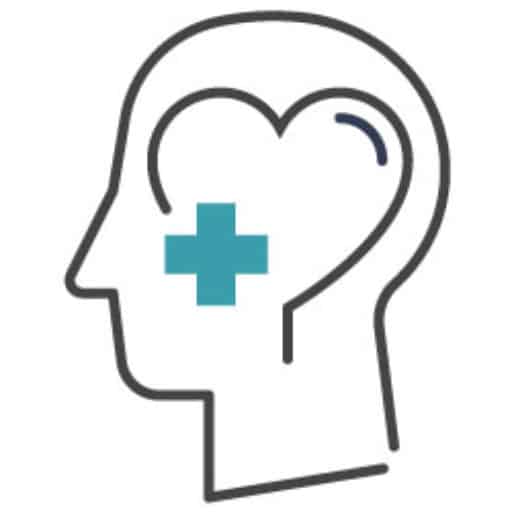Most people think trauma lives in your thoughts, but what if we told you it actually lives in your body’s wiring? Dr. Stephen Porges spent decades wondering why some trauma survivors recover while others stay stuck. What he found revolutionized how we think about healing. Polyvagal theory shows us that your nervous system, not your willpower, holds the keys to recovery.
Learn why your body reacts the way it does after trauma, how polyvagal theory explains these responses and what this means for finding real healing that lasts.
What Is Polyvagal Theory?
In 1994, Stephen Porges introduced a new way of looking at the nervous system. While studying heart rate patterns, he noticed the vagus nerve was doing more than anyone expected. It wasn’t a single, simple line of communication. It carried different pathways that developed over time, each shaping how people respond to safety or danger.
Polyvagal theory explains these pathways as three states your body can shift between:
- Social connection system (newest). When you feel genuinely safe, this system activates your ventral vagal state. Your face relaxes, your voice becomes warm and you can actually look people in the eye without feeling exposed.
- Fight-or-flight system (middle). If connection can’t solve the problem, your body revs up for action. Your heart races, your muscles tighten and you’re ready to run or stand your ground.
- Shutdown system (oldest). When fighting or running won’t work, your body triggers a nervous system shutdown and essentially plays dead. Energy drops, you feel disconnected from everything and the world becomes muffled and distant.
Trauma messes with this natural flow, leaving you stuck in survival mode when you should be able to relax. Your system gets jammed between high alert and complete shutdown, unable to move smoothly based on what’s actually happening around you.
How the Vagus Nerve Influences Stress and Trauma Response
The vagal system acts as your body’s primary stress regulation mechanism, directly controlling how trauma gets stored and expressed in your nervous system. As discussed above, your three nervous system levels create a hierarchy of responses, but trauma disrupts this natural order in specific ways.
When your vagal system functions properly, it moves fluidly between these states based on actual safety cues in your environment. Trauma changes this by creating hypersensitive threat detection pathways. Your vagus nerve essentially learns that danger could appear at any moment, keeping your system primed for defensive responses even during safe situations.
Several things start happening that change how you move through the world:
- Normal situations begin triggering alarm responses in your body.
- Your brain and organs stop communicating clearly with each other.
- Distinguishing between past danger and present safety becomes difficult.
- Your ability to connect socially gets pushed aside to make room for survival.
You start experiencing physical symptoms that seem unrelated to your emotional state because your body is doing exactly what it evolved to do when facing an ongoing threat. The problem is that your nervous system shutdown mechanism doesn’t have an off switch. It keeps running the same protective programs even when the original danger has long passed.
The Role of Polyvagal States in PTSD Symptoms
Every PTSD symptom you experience connects to one of your three nervous system states. Your body shifts throughout the day, sometimes triggered by signals you may not notice. These changes explain many symptoms, although intrusive memories, flashbacks and avoidance also play a role.
- In a fight-or-flight state, sleep feels impossible because your body wants to stay alert. Irritability rises since even small issues trigger alarm signals.
- When the system shuts down, the opposite happens. Emotions feel distant, and life may seem like it’s happening behind a layer of glass. This is how the body protects itself when stress feels too heavy.
What confuses many people is how quickly these states can change. You might feel completely numb in the morning, then become hypervigilant after someone raises their voice slightly. This isn’t your nervous system being inconsistent. It’s just responding to safety and danger cues your conscious mind might not even register.
Therapeutic Applications of Polyvagal Theory
Polyvagal theory changed everything about how trauma therapists work with clients. Instead of pushing through symptoms or trying to convince your mind that you’re safe, this approach recognizes that your body needs to feel safe first, at a physical level.
Therapists who understand this:
- Create environments that speak directly to your nervous system
- Pay attention to lighting, seating arrangements and even their own voice tones
- Recognize that your body picks up on these cues faster than your thinking mind does
The therapy room becomes a laboratory for practicing safety. Your therapist’s consistent presence and predictable responses help your social engagement system remember what real connection feels like. This isn’t just talking about safety; it’s actually experiencing it in your body.
Techniques for Regulating the Nervous System
Traditional talk therapy often struggles with PTSD because it’s trying to use your thinking brain to solve a body problem. When your nervous system is stuck in survival mode, your capacity to process thoughts and emotions becomes severely limited. It’s like trying to have a philosophical discussion while running from a tiger.
This is why body-based techniques often work better for trauma recovery, since your autonomic nervous system responds to specific interventions that can shift your state.
- Breathing practices. Long, slow exhales tell your vagus nerve it’s safe to relax.
- Cold water on your face. This can activate a natural reflex that slows your heart rate and signals your body to shift toward calm.
- Gentle movement and stretching. Simple motions help release tension stored from incomplete fight-or-flight responses.
- Safe social connection. Being with trusted people or animals signals safety and activates your social engagement system.
- Grounding through your senses. Noticing sounds, textures or scents around you can return your attention to the present.
Integrating Polyvagal Insight Into Trauma Treatment
Combining polyvagal theory with approaches such as cognitive behavioral therapy creates powerful healing possibilities. While CBT helps you change thought patterns, polyvagal techniques regulate your nervous system first, making cognitive work more effective. This integrated approach helps:
- Build stronger emotional regulation skills
- Increase resilience when facing life stress
- Create deeper mind-body healing
- Improve your relationships and communication
When your nervous system learns safety through polyvagal practices, your mind becomes more capable of processing trauma. This leads to lasting recovery that addresses physical and psychological healing.
Heal Your PTSD With Support Grounded in Polyvagal Theory
PTSD can feel unpredictable, but it may be your body’s way of trying to protect you. According to the World Health Organization, around 40% of people with PTSD recover within 1 year. Contact Restore Mental Health today to work with licensed therapists who understand trauma. With the right support, healing is possible.



